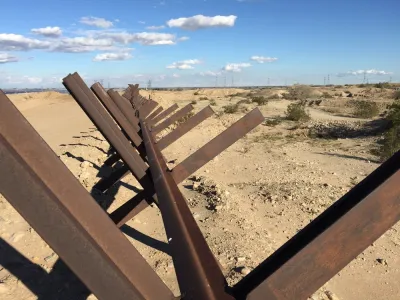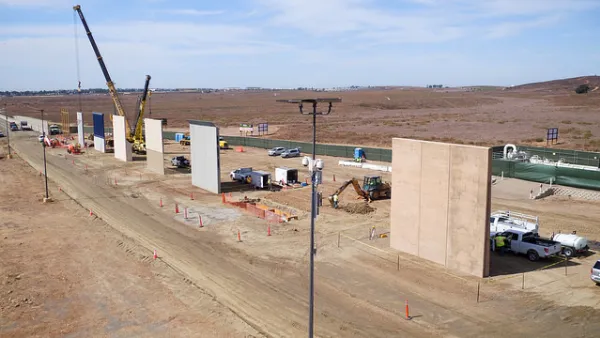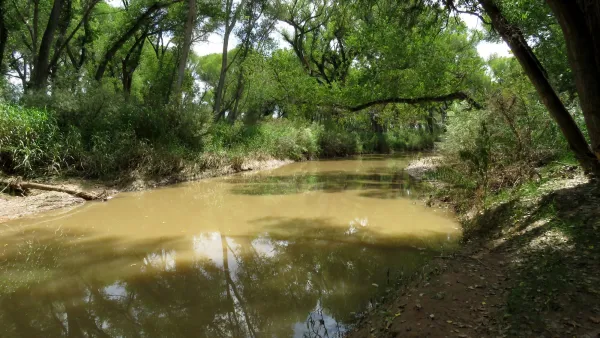Vox offers a feature length article, with lots of visual references, that tells the story of the ecological risks inherent with any plan to build a wall along the border between the United States and Mexico.

Writing for Vox, Eliza Barclay and Sarah Frostenson have produced a long-read feature article that examines the ecological risks of the Trump Administration's proposed border wall between the United States and Mexico.
While the effectiveness of a border wall in controlling the flow of people or drugs across the border is a subject of heated public debate, less attention has scrutinized the border wall's potential risk to habitat of a varied and unique ecosystems—many of which are populated by already threatened species of animals and plants.
According to Barclay and Frostenson, it's "undeniable" that the 654 miles of walls and fences already lining the US-Mexico border have made a mess of the environment: "They’ve cut off, isolated, and reduced populations of some of the rarest and most amazing animals in North America, like the jaguar and ocelot. They’ve led to the creation of miles of roads through pristine wilderness areas. They’ve even exacerbated flooding, becoming dams when rivers have overflowed."
Normally the potential environmental impacts of any development project would be subject to environmental review, but "ever since the passage of the Real ID Act of 2005, DHS has had the power to waive most environmental reviews in the name of national security."
Hanging in the balance along the 2,000 miles of border not yet separated by a fence or wall is the potential of damage of unprecedented scale and scope to wildlife habitat if the Trump Administration succeeds in its efforts to build its long-promised wall. The article is a detailed look at many of the geographic and natural reasons along the border, and the animals and environments that would be at risk to the effects of the border wall.
FULL STORY: The ecological disaster that is Trump’s border wall: a visual guide

Analysis: Cybertruck Fatality Rate Far Exceeds That of Ford Pinto
The Tesla Cybertruck was recalled seven times last year.

National Parks Layoffs Will Cause Communities to Lose Billions
Thousands of essential park workers were laid off this week, just before the busy spring break season.

Retro-silient?: America’s First “Eco-burb,” The Woodlands Turns 50
A master-planned community north of Houston offers lessons on green infrastructure and resilient design, but falls short of its founder’s lofty affordability and walkability goals.

Test News Post 1
This is a summary

Analysis: Cybertruck Fatality Rate Far Exceeds That of Ford Pinto
The Tesla Cybertruck was recalled seven times last year.

Test News Headline 46
Test for the image on the front page.
Urban Design for Planners 1: Software Tools
This six-course series explores essential urban design concepts using open source software and equips planners with the tools they need to participate fully in the urban design process.
Planning for Universal Design
Learn the tools for implementing Universal Design in planning regulations.
EMC Planning Group, Inc.
Planetizen
Planetizen
Mpact (formerly Rail~Volution)
Great Falls Development Authority, Inc.
HUDs Office of Policy Development and Research
NYU Wagner Graduate School of Public Service



























